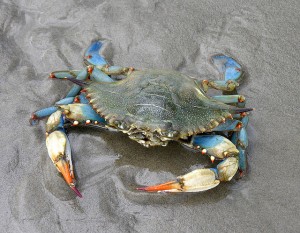We have much more to do and your continued support is needed now more than ever.
Understanding Our “New” Climate Threat: Ocean Acidification
A passionate advocate for the ocean, John Racanelli serves as CEO of the National Aquarium, where he immerses himself in pursuing the aquarium’s nonprofit mission to inspire conservation of the world’s aquatic treasures. The National Aquarium is the Maryland affiliate of the National Wildlife Federation.
Let’s say you visit the same spot on the same ocean every year. You take a swim, and it feels pretty much like the last time. The temperature doesn’t seem all that different. You certainly can’t tell that the pH is changing.
Yet just as the global climate is changing, so too is the ocean’s chemistry. Alongside atmospheric climate change, ocean acidification is one of the most serious issues affecting the waters of our planet and all of its inhabitants.

Though the media has taken to calling ocean acidification our “new climate threat,” it is not a new problem. Since the dawn of the Industrial Revolution, carbon dioxide has been increasing in our atmosphere and therefore our seawater. Now, over 200 years later, we can no longer ignore the threat. Even conservative estimates suggest that by 2100, global ocean waters will warm by close to 2 degrees Fahrenheit on average and acidity will increase by 150 percent.
Chesapeake Bay Wildlife at Risk
So what does this mean for ocean wildlife? Clearly, the sea’s complex food web will be disrupted. Highly mobile animals will be forced to expand their home ranges as they search for more hospitable waters. Sadly, coral reefs as we know them will be forever altered and could even disappear. Animals will struggle to build skeletons and shells in waters that literally dissolve them. And growth and reproductive capabilities of numerous marine animals will be at risk.
The National Aquarium’s location in the heart of the Chesapeake Bay watershed forces us to face the possibility of drastic changes to this iconic ecosystem that encompasses six states and the District of Columbia. According to NOAA’s Chesapeake Bay Office, the Bay is being affected at a faster rate than the global average because land in this region is already subsiding naturally. Bay temperatures have already increased almost 2 degrees Fahrenheit since 1960 and are projected to increase by an additional 3 to 10 degrees by 2100—a tremendous change that will have a profound effect on the nation’s largest estuary.
Increased acidification of the Bay will alter its delicate balance in other ways. For example, according to marine geologist Justin Ries of the University of North Carolina Chapel Hill, blue crabs could grow larger, while the creatures they eat, including oysters and clams, could suffer from weaker, slower-growing shells. These bivalves, in addition to being an integral part of the food chain, also contribute to healthier water quality by filtering huge quantities of Bay water. The moral: damage one small species and you affect the entire Chesapeake Bay.
What We Can Do
We cannot simply undo the impacts of ocean acidification. The carbon dioxide we are putting into the atmosphere today will continue to accumulate for decades. There is hope, however, and as always, it starts with each of us. Reducing our consumption of fossil fuels and minimizing our collective carbon footprint isn’t just the best way forward, it’s the only way. As Fyodor Dostoevsky said in The Brothers Karamazov, “For all is like an ocean. All flows and connects. Touch it in one place and it echoes at the other end of the world.”
For more information about the National Aquarium, visit www.aqua.org. Also, be sure to read our recent report, Wildlife in a Warming World, to find out how climate change is already impacting wildlife across the country.





















